My research on the life of Florence Stratton is now in its fourth year. It’s true that I’ve made multiple discoveries in what would seem, at times, a hopeless endeavor, but there always seems to be an open door at the end of the hallway, so to speak. And I have definitely ventured into many of those long corridors.
In late December 2015, after a visit to the Sam Houston Regional Library and Research Center to research historian Bill Quick’s papers, I “quickly” (pun intended) became inspired by how organized he was in his research and how he maintained his notes. Although I never had the pleasure of meeting Mr. Quick when he was alive, I am ever so grateful for his years of documentation of SETX history, especially regarding the Sabine Lighthouse—it appears we shared a mutual love for this structure.
 So as many do, in January I decided to make a New Year’s resolution. I spent countless hours filing, scanning, and digitizing all my files for future use by persons unknown should the need arise. I believe I am nearly through with this growing inventory of information, except for the Florence Stratton Project as I call it. I have scanned and digitized many related files and documents, but three-plus years of research are not always readily available to scan, such as my small two-page file on the city of Ronald, Texas. Nevertheless, most of the files about Florence and her family are stored as PDFs, along with countless newspaper clippings in JPEG (photo) format. Then there are the “Susie Spindletop’s Weekly Letter” articles written using Florence’s nom de plume, which span February 28, 1926 to January 23, 1938. This collection will be a whole new digitizing endeavor, which will mean many weekly trips to the Sam Houston Region Library and Research Center to obtain clearer images. The initial scans from many of the microfilm collections for the Beaumont Enterprise are quite blurry.
So as many do, in January I decided to make a New Year’s resolution. I spent countless hours filing, scanning, and digitizing all my files for future use by persons unknown should the need arise. I believe I am nearly through with this growing inventory of information, except for the Florence Stratton Project as I call it. I have scanned and digitized many related files and documents, but three-plus years of research are not always readily available to scan, such as my small two-page file on the city of Ronald, Texas. Nevertheless, most of the files about Florence and her family are stored as PDFs, along with countless newspaper clippings in JPEG (photo) format. Then there are the “Susie Spindletop’s Weekly Letter” articles written using Florence’s nom de plume, which span February 28, 1926 to January 23, 1938. This collection will be a whole new digitizing endeavor, which will mean many weekly trips to the Sam Houston Region Library and Research Center to obtain clearer images. The initial scans from many of the microfilm collections for the Beaumont Enterprise are quite blurry. 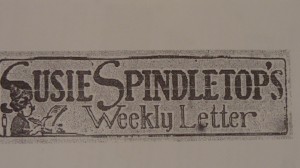
I have also realized that field trips are a necessity. Given the timetable, genealogy, and friendships in Florence’s history, I found it important to proactively explore these sites, cities, and research hubs. And it was in Austin that I began my journey over the road. On Monday January 25, I stepped into the Dolph Briscoe Center for American History. The center holds many historic treasures—so much so that I could spend months, or even years, sifting through them. Since I only had a day, I decided to focus on W.P. Hobby Sr.’s papers. W.P. Hobby was the Governor of Texas from 1917 to 1921. At the time, he was the youngest governor ever to hold the office in the state. Hobby also had many local ties to Beaumont. He became the manager and part owner of the Beaumont Enterprise in 1907 and married Willie Cooper, the daughter of the U.S. representative Sam Branson Cooper, on May 15, 1915. At various points in Florence’s timeline, I noticed she spent time with Willie Cooper in Washington D.C. (1907–1908) or in the Governor’s Mansion in Austin (1917–1921). Other newspaper articles described her attendance at many functions with the Governor and First Lady, from a Turkey trot in Cuero to the inauguration of the Mexican president Álvaro Obregón.
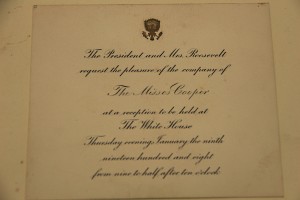 In one of the two boxes I requested, I found a scrapbook that once belonged to Willie. After looking at all the newspaper clippings and other memorabilia, it certainly put what I’d been studying into perspective. Between the clippings and other historical artifacts, I located an invitation addressed to “The Misses Cooper” dated January 9, 1908. It reads as follows:
In one of the two boxes I requested, I found a scrapbook that once belonged to Willie. After looking at all the newspaper clippings and other memorabilia, it certainly put what I’d been studying into perspective. Between the clippings and other historical artifacts, I located an invitation addressed to “The Misses Cooper” dated January 9, 1908. It reads as follows:
The President and Mrs. Roosevelt request the pleasure of the company of
The Misses Cooper
At a reception to be held at
The White House
Thursday evening January the ninth
Nineteen hundred and eight
From nine to half after ten o’clock
Holding something like that in your hand can be inspiring to say the least. Both Willie and Florence attended the White House reception in January the following year as well. I know this thanks to an article in the Washington Post dated January 8, 1909.
I made many discoveries that day. Most of the scrapbook concentrated on W.P. Hobby becoming lieutenant governor and eventually governor when James E. Ferguson was removed from office. I also noticed a lot of content on women’s suffrage (women’s right to vote). Unlike others, Hobby saw the benefits of this early. There is one letter to the editor of the Beaumont Enterprise in Willie’s scrapbook. We’ll call him Pete (because that is how he signed his name in the letter). Pete was hell-bent on not giving women the right to vote. He talked of the curse of Jehovah God “by harkening to the voice of women, and giving to the ballot.” He also quoted the Apostle Paul and the like, but it would have been pointless to spend one more iota of time on this jackleg. It is interesting to ponder just what Mr. Pete would have thought when a woman, Miriam Amanda “Ma” Ferguson, was elected Governor of Texas in 1925. A possible coronary, I would imagine.
I assume Willie saved this letter as a reminder of how important this era was for women, and through the newspaper articles, I was also able to get a small glimpse of Florence’s journey. In September 1918, she was listed as one of 31 vice chairpersons for the senatorial districts for the Democratic Party.
My next field trip will be to the place Florence treasured most, her place of birth, Brazoria County. Florence was born on March 21, 1881 at her childhood home in Brazoria, Texas, which in later years she revisited regularly in “Susie Spindletop’s Weekly Letter.” Her popular column was published each Sunday, and in this, she also spoke highly of her grandfather, Major Asa Evan Stratton, who owned a sugarcane plantation.
My other ventures into her past will this month include a visit to Woodville to find any more sources relating to Willie Cooper that may be traceable to Florence, a revisit to Austin to peruse more of W.P. Hobby’s papers, and then the inevitable journey to Troy, Pike County, Alabama. 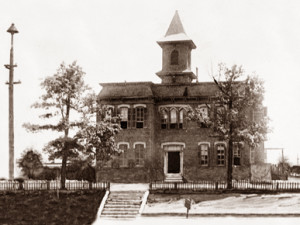
Contrary to most articles about Florence, she graduated from Troy Normal College and not Gray Normal College as W.T. Block noted in his earlier writings. In fact much of Florence’s lore is inaccurate, and I’m still sorting through the mess. This is not to discredit Mr. Block on this subject; he was blissfully unaware that the recollections of his primary source, Florence’s niece, were wholly inaccurate. I personally have no knowledge of the atmosphere or Eunice’s mindset when she was interviewed for the articles published in the Texas Gulf Historical and Biographical Record, but most of the “facts” were just plain wrong.
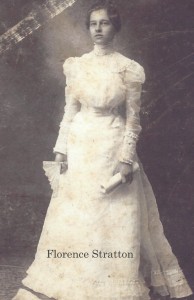 Luckily, with time, Florence’s past is emerging in the form of documented proof on how she spent her life, and how she was a positive resident who was loved by all. Many of my early questions have been answered, but there is still a mountain of research to climb. Some readers have asked what I plan to do with all this research. Well, it is no secret that I intend to submit a marker application to the Texas Historical Commission (THC) in 2017 to celebrate a life that deserves recognition in SETX history. Indeed, Florence’s contributions to Beaumont history, society, and charity cannot be matched.
Luckily, with time, Florence’s past is emerging in the form of documented proof on how she spent her life, and how she was a positive resident who was loved by all. Many of my early questions have been answered, but there is still a mountain of research to climb. Some readers have asked what I plan to do with all this research. Well, it is no secret that I intend to submit a marker application to the Texas Historical Commission (THC) in 2017 to celebrate a life that deserves recognition in SETX history. Indeed, Florence’s contributions to Beaumont history, society, and charity cannot be matched.
Category Archives: People
Tales from Hallowed Ground: Catherina Jeanette Stengele
My first introduction to Miss Stengele was on a cold morning during a walk through Magnolia Cemetery. As the story goes, she was a lowly seamstress who worked hard to save her money. In her short 43 years of life, she purchased a costly St. Catherine of the Wheel statue for her mausoleum, along with the twelve plots near her intended resting place, all of which she had tiled in.
Sounds like an amazing story, right? Well it is, so let us throw the rumor out and try to ascertain the facts.
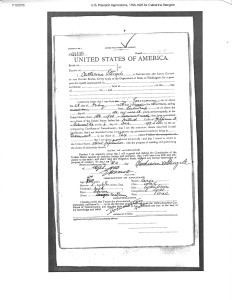 Early Beaumont was home to an entrepreneur in the form of the youthful Miss Stengele. According to her naturalization form, she arrived in this country in 1884, spent a few years in Baltimore learning the millinery business, and then moved to Beaumont in the late 1880s. The form also shows she was born on February 28, 1856, and not 1866 as stated on her mausoleum. (I suppose, even in death, some need to hold onto their youth.) Her country of origin is also unclear because of contradictory documentation. I have found some papers stating that she was from Germany. Others indicate that she was from Holland. My belief is that she was probably born along the present German–Holland border, which was initially a part of Germany but later became Holland.
Early Beaumont was home to an entrepreneur in the form of the youthful Miss Stengele. According to her naturalization form, she arrived in this country in 1884, spent a few years in Baltimore learning the millinery business, and then moved to Beaumont in the late 1880s. The form also shows she was born on February 28, 1856, and not 1866 as stated on her mausoleum. (I suppose, even in death, some need to hold onto their youth.) Her country of origin is also unclear because of contradictory documentation. I have found some papers stating that she was from Germany. Others indicate that she was from Holland. My belief is that she was probably born along the present German–Holland border, which was initially a part of Germany but later became Holland.
Miss Stengele was certainly competent in the world of business. As a single woman in the 1890s, she made a good living in her millinery business, and other ventures in the financial and real estate sectors which also seemed to work well for her. She was so successful in finance that she placed an ad in the Beaumont Journal in May 1899 stating that she was “Going to quit the business! I am going to quit the millinery business, and from the date will sell my entire stock at very low prices.”
Catherina Jeanette Stengele seemed to be a natural at finance and the lending market. So much so that she quit her day job, so to speak. Her investments would even finance a return trip to Europe in 1901. See the article in the Beaumont Enterprise dated January 6, 1900. 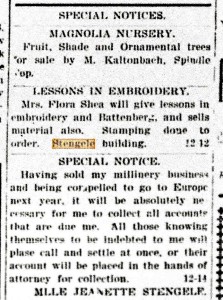
You may notice the name Stengele Building, highlighted in yellow above the article. Miss Stengele also owned a three-story brick building at 345 Pearl Street in Beaumont, which had housed her millinery shop as well as several of her tenants.
While records from 1900 until her death in 1909 tell a tale of a successful businesswoman, not every investment would always go as planned. For instance, around 1905–6, records of court proceedings show the bankruptcy of the Nederland Rice farms after finishing the procedure to file for bankruptcy in which she held a $20,000 stake. Unfortunately I haven’t yet had the time to research the court files in detail, but this is on my to-do list.
In April 1909 Miss Stengele left Beaumont for Los Angeles because of an illness. An article from the Houston Post dated September 16, 1909 states she “underwent two surgeries for appendicitis during the summer.” Unfortunately Miss Catherina Jeanette Stengele had passed away the day before the article was printed, on September 15, 1909.
I found a few articles from the Beaumont Journal that explained the highlights of life and the aftermath of her death, but her will is undoubtedly of considerable interest. According to hearsay, she was at odds with one of her brothers and left him nothing, but technically that’s not true. Browsing through her will, I found that she did leave a detailed list of her heirs and her final wishes. Her wish for the St. Catherine of the Wheel statue was originally included in the first draft of her will in 1908, but the mausoleum was only added in May 1909. She had many family members, both locally and in Holland, to whom she bequeathed her wealth. Her assets were around $120,000. That’s the equivalent of $3.1 million today. Not too bad for a lowly seamstress… or should I say, a milliner?
Tales from Hallowed Ground: Virginia Lee Rowley
While walking through Greenlawn Cemetery in Groves one mid-August morning, I came across a monument erected by the American Legion Auxiliary. Surrounding the stone memorial, which was inscribed “They gave their lives that freedom shall not perish,” were the graves of several veterans. Although most survived the conflicts of World War I, World War II, Korea, and Vietnam, and subsequently went on to lead healthy lives with their loved ones, there was one memorial that differed from the rest. Corporal Hugo J. DeBretagne, it seemed, paid the ultimate price for his country and never returned. The inscription on his headstone reads:
In memory of Hugo J. DeBretagne, CO D 1st Bat. 2nd Marines Killed at Tarawa Buried at sea. Oct. 13, 1923 – Nov. 23, 1943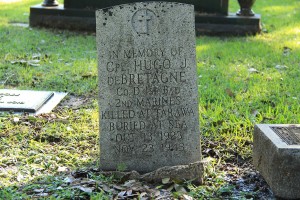
There are multitudes of stories at the cemetery that I would like to pursue. Many veterans lived simply and some even heroically, but there are no claims to their historic pasts. In fact, most of us will similarly end up forgotten in the end. It’s sad but true; most of our history will disappear when we die. There may be a few friends and/or family members who will grab the torch and try to prop us up for eternity, but ultimately, death, for most, is where personal history ends.
As I maneuvered through the area to take photographs of the residents’ headstones, I came across what will probably go down as one of the oddest mysteries in my search through SETX history. Located near the American Legion’s monument was a flat headstone with an image of the deceased in porcelain. This is not entirely unusual in and of itself, but the text that went along with the image was very disturbing to say the least:
If I must die then die I must and when the coffin round me rusts my bones will go whence they came and all that’s left is my name. To shield that name I’ll do my best; that’s all that’s left when I’m at rest. I’ll do no harm and bring no shame upon my dad and mother’s name.
Not really a poignant tribute to an attractive 20 year old who lost her life so young, is it? So who was she, and what was her story? Let’s try and piece together this tale.
Virginia Lee “Gene” Rowley
While doing research that evening, I came across a couple of leads, but unfortunately (as usual), the facts didn’t add up to the reality. My first find was an IMDB page for a 12-minute film called Roothold (2004). It was directed by, and starred, Port Arthur native Eric Patrick alongside Jennifer Baker. According to the IMDB plot summary, the film has some historical significance:
Roothold is a divination film that speculates on Gene Rowley: a woman pictured on an abandoned gravestone in Port Arthur, TX. The film is an elusive narrative that places the filmmaker in an emotional and psychic state of ceremonially rehearsing for mortality and burial.
– Written by Anonymous
I looked for Eric Patrick’s website but all I could find was his Wikipedia page:
https://en.wikipedia.org/wiki/Eric_Patrick
The second—and last—mention of this mystery that I found on the internet was on an Angelfire web site. You remember those free sparkly web sites that never really amounted to much? I could hardly believe this one was still up and running, but there it was, in all its glory. It shared the following story:
The story of Virginia Rowley, ‘Gene’ as her family and friends called her, is a sad one. Gene was born on October 8, 1922 in Port Arthur, Texas. Gene’s father, Clyde, worked for the city as a railroad operator. Gene’s mother, Martha, was a seamstress with a strange disposition. The strange behavior would today probably be diagnosed as bipolar disorder, something that Gene likely would have been diagnosed with as well. Gene was the eldest of four children; Elroy, Clyde Jr. and Tara. Martha would require the children in church each Sunday; usually promptly switching the children with branches for doing the slightest thing. Though Martha loved her children; she was aggressive and was quick to anger. The children grew up attending private schools. The children, especially Gene and Tara were not allowed to date. This was taboo for Martha until her children came of age. Though Martha kept the children under her wing to an extreme degree; she demanded that they make their own way in life by obtaining jobs at a young age. Martha encouraged the children to live at home so that she could keep a close eye on them. By 18, Gene ventured from the nest, shortly after graduating and took a job as a telephone operator for Southwestern Bell. She became independent and even found a boyfriend. The dashing young man was 22-years-old, his name was James. It was instant love for Gene. The two became inseperable; this was something Gene went to great depths to hide from her mother. Though Gene was on her own; Martha did not approve of James. Martha thought of James as too worldy. Gene was more of a straight laced girl to Martha; she needed a likewise young man. Martha, too, didn’t approve of James’ age. After a year long union Gene discovered the unthinkable. She was expecting a child. James was confronted with the issue; to Gene’s disbelief; James fled Port Arthur, refusing to contact Gene. Heartbroken and betrayed; Gene confronted several friends and relatives with the issue; they all assured her that they would help her and everything would work out, however, Gene knew that this would shame and devastate Martha a great deal. On June 18, 1942, Gene took the day off from work and stopped by Martha and Clyde’s to say hello. Gene never breathed a word about her pregnancy to her parents. It was simply a good bye visit. Gene later drove to Nederland. Once there, Gene found an unoccupied truck and plowed into it. Gene died shortly after reaching the hospital. That night Martha found a note (At top) that Gene had left in her bedroom while visiting that day. It became quite clear that this had been no accident. The reasons were quite clear. Gene’s pregnancy would have brought harm and shame to her parents name.
Knowing this, the first site was possibly an author/director’s take on the mystery. It was honest enough I guess, but I haven’t seen the movie, nor do I know how to watch or buy it. To be frank, the second site comprised plain nonsense. The author had devised an epic story around a few facts but failed significantly in producing details, resulting in what I can only assume was an attempt at historical fiction. All names, except Virginia’s, were inaccurate, so if the narration of a historical tale was intended, it was shoddily done. I wondered if both the first and second sources were related. I still have no idea, but their timeframes were similar. Again, I haven’t seen the 12-minute movie and IMDB was scant on detail.
But now that we have discussed what is online, let us delve into some of the “real” facts.
Virginia “Gene” Lee Rowley was born on October 16, 1922 in Nederland, Texas to Rex Blanton Rowley and O’ciela M. Roy. She was the oldest of four siblings. Her brother Rex, who was born in 1924, would go on to serve in World War II. Vera, her sister, was born in 1925, and the youngest of the bunch, her brother Jerry, was born in 1928. I found very little on their childhood other than that they lived in the Van Oostrom addition. (This addition, according to records, is the area around Van Street and Herring Avenue in Port Neches.) The father Rex, a World War I veteran, served with Company C, 9th Infantry, and held several jobs through the years. The records showed that he was a machinist at an oil refinery (the name of which one is unknown) in the 20s, and at other times a dairyman (in Nederland) and a seaman.
In November of 1934 I can only assume that life changed dramatically for the Rowley family because the father Rex decided to take his own life in their house. Obviously I’d be promoting the same theorizations as those who speculated on Virginia’s scenario, so I will disregard my thoughts as to why he may have taken this extreme route and terminated his life, leaving a wife and four children behind to fend for themselves. I will say that Rex’s exposure to the vile war (1916–1919) is currently unknown, but I can only surmise that his experience would have been unimaginable if he had seen the front.
Knowing that Virginia’s father died so tragically, I wondered if this was the origin of the inscribed words that were placed on her headstone eight years later. Unfortunately we will possibly never know, but there is more to this story than a couple of web sites will tell.
Virginia eventually moved to San Antonio where she was employed as a radio operator in Duncan Field. Virginia met her demise on Frio City Road in an auto accident in the early morning hours of July 24, 1942. The death certificate stated that her death was an accident, not suicide. There was no mention of a pregnancy in any of the documents that I found.
The tragedy of the family would continue almost 20 years later. Rex, the oldest remaining sibling, was electrocuted while working on an air-conditioning unit in 1961. He is also buried in Greenlawn Cemetery, next to his mother O’ciela who died in 1963. Jerry H. Rowley died of a cardiac arrest in 1981 leaving Vera as the sole sibling. Vera, as far as I can tell from the records, died in 2008. I say this because a Vera B. Rowley married an Elmo J. Rowley in Port Arthur in 1943, but that doesn’t fit the other available records. Also, Vera and Jerry are not listed in the relevant census and city directories of the 20s, 30s, and 40s, although I do know that they were siblings to Virginia because of their birth and death certificates.
There is a further mystery. According to the 1920 census, O’ciela (or Ciela in some documents) was the daughter of Albert and Metta Wee Bossman and lived with her husband Rex B. Rowley. It is an original document, but I see no way that it can be right since all other documents state that her parents were A.J. and Maria Alida Roy.
There was much tragedy in this family, and I would certainly not want to resuscitate any negative memories for their descendents. I would however somehow like to find out the meaning of the words on the headstone. Was it some sort of tribute or perhaps a memorial left by the living family members? Was it Virginia’s poem? The tragic loss of a father for a 14-year-old girl could certainly have brought out thoughts of sorrow. She may even have felt partially to blame for the tragedy. Did her mother O’ciela write it? This is quite possible, but until I find evidence, I could not say for sure. My only goal in this saga was to bring to light the facts about Virginia, but as I dug deeper, this family’s ongoing tragedies and mysteries came to the fore.
If anyone knows any part of this story or has knowledge of the family, I would love to hear from you.
rediscoveringsetx@gmail.com
Update: 1/04/2016
What a difference a week and a few newspaper archives can make! While conducting research for my next endeavor, I veered off my intended path and found myself back on the Rowley’s trail. I inadvertently unearthed a few more answers to some of the questions that were still puzzling me about the Rowley family.
Rex B. Rowley Sr.’s death
A Port Arthur News article dated November 27, 1934 informed its readers of Rex’s death and the probable cause of his suicide:
“Relatives said he had been despondent because he had not had steady work. Justice E.B. Moye returned a suicide verdict.”
I have included a photo of the full news article here. 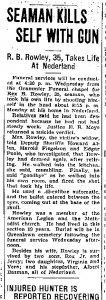
Who was Albert Bosman?
Another mystery the article cleared up was the link between Albert Bosman and the family. As previously explained, I had discovered a 1920 census showing O’ciela as the daughter of Albert Bosman and “Metta Wee.” I was certain this was an error because all the other documents pointed to Andrew and Maria Roy being her parents. The truth was revealed at the end of the article: Albert Bosman was actually Rex’s stepfather.
“Besides his wife, Rowley is survived by two sons, Rex Jr. and Jerry; two daughters, Virginia and Vera; and his stepfather, Albert Bosman, all of Nederland.”
I also discovered that “Metta Wee” was the maiden name of Vera, Rex’s mother.
Who wrote the poem on the headstone?
I still cannot say for sure, but I found a few articles in The Chronicle (1939) that offer a clue.
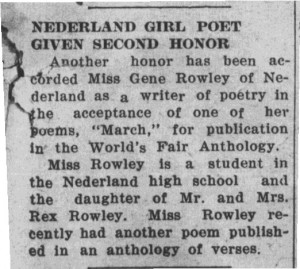 A February 17 article entitled “Nederland girl, poet given second honor” announced that one of Gene’s poems, “March,” was to be published in the World’s Fair Anthology. It went on to say that Virginia (Gene) had previously had a poem published in an anthology of verses.
A February 17 article entitled “Nederland girl, poet given second honor” announced that one of Gene’s poems, “March,” was to be published in the World’s Fair Anthology. It went on to say that Virginia (Gene) had previously had a poem published in an anthology of verses.
Another article, dated November 10, 1939, stated that O’ciela Rowley was the author of a poem appearing in Christmas Lyrics of 1939, which had been published by Beacon Publications.
“This anthology, according to the Beacon concern, has been issued annually since 1936. Work of Mrs. Rowley already has appeared in the World’s Fair Anthology.”
This I found very interesting. Were both mother and daughter published poets? It is possible, but as I’ve discovered through my research, you should never assume that the printed word is without errors. I do believe Virginia was an accomplished poet. At Nederland High School, I found multiple articles on her awards as well as her studies. And this makes me think that she was indeed the source of those dark words etched under the photo on her headstone. Again, we will probably never know for sure, but it seems we are getting closer…
M. F. Yount Mausoleum
Magnolia Cemetery is full of marvelous statues, monuments, and mausoleums, which are lasting tributes to the who’s who of Beaumont history. I admit I have spent more time there, strolling through this majestic locale, than at the many other SETX cemeteries that I haunt. For me it has always been a special place. Unfortunately, one of the most stunning memorials to grace this hallowed ground no longer stands. Why? Let us delve into the story.
Miles Franklin Yount was born in Arkansas in January 1880. At age 15 he moved to Texas and began working in the rice and oil fields. Eighteen years later, he formed the Yount Oil Company, which became the Yount-Lee Oil Company in 1915. In that same year he married Pansy Merrit. In 1925 one of his wells struck oil and thus began Spindletop’s second oil boom. 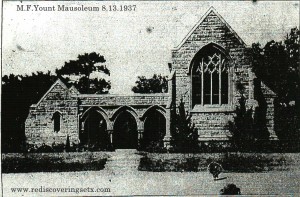
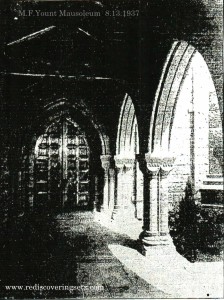 Frank Yount was known as the “Godfather of Beaumont” because of the aid he provided for building projects in the city of Beaumont in the late 20s and early 30s. He even loaned money to the city to meet its payroll demands in 1932.
Frank Yount was known as the “Godfather of Beaumont” because of the aid he provided for building projects in the city of Beaumont in the late 20s and early 30s. He even loaned money to the city to meet its payroll demands in 1932.
Sadly, in November 1933 Yount perished from a sudden heart attack. Pansy, his wife, decided to build a huge mausoleum in honor of her dear departed husband, but one day, while walking through the mausoleum, she noticed a bit of debris on the floor. Fearing its eventual collapse, she asked the architect how long the mausoleum would remain standing. The architect replied that it would be good for around 500 years. To Pansy, this was not long enough, and she had the mausoleum torn down. Both are now buried side by side in bronze vaults on the same grounds where the mausoleum once stood. I have no idea how long these vaults will last, but as you can see by the photos of the mausoleum, it is a shame that this is not still standing. Nevertheless, Pansy has her own story, and I can only respect what may have been going on at the time.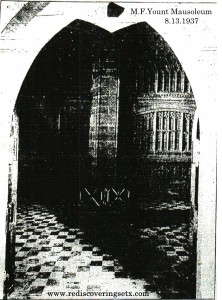
Sources: Handbook on Texas, Judith Linsley, Beaumont: A Chronicle of Promise
Rediscovering you’re two years old.
Well, another milestone has been reached here under the oaks at ye olde Block Farm. Rediscovering SETX has turned two! First, I would like to thank all who read our blog, follow us on Twitter, or have liked us on Facebook. Your input and support makes bringing SETX history to those who might otherwise not know of our interesting past even more a labor of love. As in our first year, over the past twelve months we’ve met and heard from many wonderful SETXans, been to many great places, and learned more and more from all of you.
We learned the trials and tribulations of life in Jefferson County during World War II. We discovered who Tom “the Tramp” was and delved into the fascinating life of Port Arthur’s Evelyn Keyes via out new monthly segment Tales from Hallowed Ground. But my favorite article has definitely been from a reader who shared her grandmother’s journey to Port Arthur in 1905. Blanche Morgan’s story provides a captivating account of the hardships and successes of a widowed mother of four in the early 1900s. Finally, it was fitting to investigate architect Nicholas Clayton’s marvelous legacy of Galveston architecture for the 40th anniversary of the Galveston Historic Homes Tour.
The Places
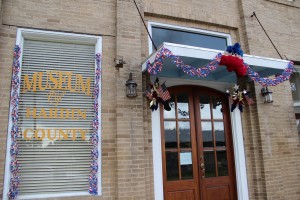 Since its creation in 2012, Rediscovering SETX has strived to promote SETX museums and historic houses, as well as its history. Well, this year was no different, and we explored many magnificent places. Here are some of the highlights:
Since its creation in 2012, Rediscovering SETX has strived to promote SETX museums and historic houses, as well as its history. Well, this year was no different, and we explored many magnificent places. Here are some of the highlights:
I was fortunate to be invited to the grand opening of a marvelous museum in Kountze called the Museum of Hardin County. The museum opened its doors in August, after years of hard work and determination by the Hardin County Historical Commission and its members. Another prized invitation from Hardin County was to the Terry Bertha Cromwell Museum located in Sour Lake. 
In Orange County, we discovered the Heritage House Museum and did an awe-inspiring tour of the Lutcher Memorial Church Building; I must say that this is one of SETX’s greatest treasures.
Other memorable sites include the Beaumont Police Department Museum, Clifton Steamboat Museum, Christmas at the Pompeiian Villa, the Women’s Club of Beaumont, Heritage Village (Woodville), Liberty Opry (Liberty), Polk County Museum (Livingston), Bayou Bend (Houston), Bishop’s Palace (Galveston), and finally Galveston’s 40th Annual Historic Homes Tour.
History
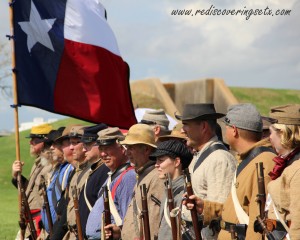 We also attended some notable historic celebrations, memorials, and fun reenactments. Dick Dowling Days turned 50th in September, and this coincided with the 150th anniversary of the Battle of Sabine Pass. The Liberty County Historical Commission did a wonderful job of treating a few of its esteemed residents, who forged the grounds of what is today Liberty County, with the “Whispers from the Past” tour in October. It was both inspiring and entertaining.
We also attended some notable historic celebrations, memorials, and fun reenactments. Dick Dowling Days turned 50th in September, and this coincided with the 150th anniversary of the Battle of Sabine Pass. The Liberty County Historical Commission did a wonderful job of treating a few of its esteemed residents, who forged the grounds of what is today Liberty County, with the “Whispers from the Past” tour in October. It was both inspiring and entertaining. 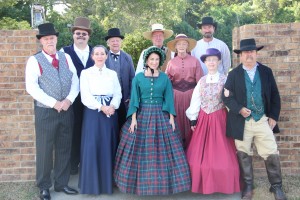
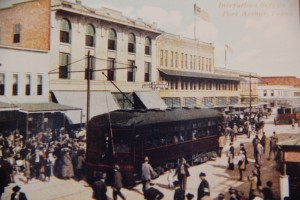 In December, the 15th, to be exact, it was the 100th anniversary of the Interurban. (The Interurban was an electric train that ran from Port Arthur to Beaumont for 19 years, between 1913 and 1932.) Unfortunately. little is left of this SETX achievement, and very few know of its existence. We were glad to be able to shine a light on this awesome part of our past.
In December, the 15th, to be exact, it was the 100th anniversary of the Interurban. (The Interurban was an electric train that ran from Port Arthur to Beaumont for 19 years, between 1913 and 1932.) Unfortunately. little is left of this SETX achievement, and very few know of its existence. We were glad to be able to shine a light on this awesome part of our past.
In January, the 113th anniversary of Spindletop was celebrated at Gladys City with the Driller’s Reunion. And what a splendid time was had by all. I bet even the Temperance ladies had an enjoyable time!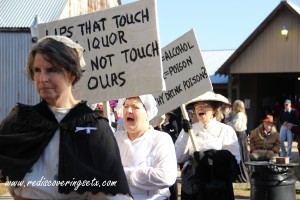
Future
As in the first two years, we will continue to visit and promote what SETX has to offer. Our little part of the world is rich with history, and we think it should be communicated to all and sundry. So if you know of a museum, historic home, or any other part of our history that you think should be given some online airtime, then please send us your feedback and suggestions. You can contact me by email at rediscoveringsetx@gmail.com. Alternatively, you can also leave a comment on our Facebook page, Flickr, or @RediscoveringSE on Twitter.
Here’s to another remarkable year of rediscovering SETX!
Blanche’s Journey: An Early Look at Life in Port Arthur
In February of 1905, as winter’s hold clamped down hard on Mason City, Iowa, Blanche’s mother lay sick with a high fever. As the doctor looked on, he knew her health would not improve if she continued to live in the Corn Belt state.
“Mr. Rowley, you will have to leave the North. You have got to go to a warm climate near a sea shore if your wife is to get well,” explained Doctor Marston.
And so this is how the journey began for the Rowley family.
The following are excerpts, written on May 25, 1962, from Mrs. Blanche Lee Morgan’s journal. I thought it appropriate that you experience her journey in her own words.
It was the first of October, before father had sold all his rent property and our lovely home. Finally, the day came for he and brother to leave. He kissed us good bye and held mother close to him and said, “Now don’t you worry, I am going to find a place where the sun shines all the time.”
We were lonely without father and brother. Grace and I went to school and finally one day mother received a letter from father which said, “I am on my way south to Port Arthur, Texas. While I was in the depot in Kansas City, Missouri on my way to sell the apple orchard I met a man named Gates and another named Stillwell. I got to talking to them, and what do you know – right across the ticket room hung a canvas which said, “Port Arthur, Texas – the Flower of the South.” Mr. Gates said the town was close to the sea and was built on Lake Sabine, that it was sunshiny and warm. He was taking several other men with him to Port Arthur. He bought my father and brother a ticket and said to come on this excursion with him to Port Arthur. My father gladly accepted the offer and traveled with them. Port Arthur was not much of a place to live in.
The Journey:
I took along a note book to write down events and things which I saw out of the train car window. Laura, my oldest sister had her pet canary in his cage to take care of. Mother sat back in the car with her eyes closed, and I noticed tears rolling down her cheeks. My youngest sister, Grace, saw them too, and she said, “What are you crying about, we are going to see Daddy.” I kept up with the stations we stopped at, and watched the people get off and on the train. We reached Albia, Iowa, and changed cars to the Wabash. It was so dark now you could not see anything out of the windows.
Time passed and everyone was sleeping, or lying quiet. I just couldn’t sleep but somewhere between midnight and 8 a.m. in the morning of the next day mother was shaking me and saying, “Gather up your things, we are in Kansas City, Missouri.” We climbed on a bus drawn by horses and sat up on top, and it was awful cold. The bus took us to the Kansas City Southern Railway station. We went inside, and there was people from everywhere. We were pretty hungry and mother opened her basket of food and spread out a tablecloth on the bench, and she gave thanks for the food, and for getting this far safely. We were about halfway now, on the road to our new home, a place of excitement, awe and disappointment. If mother had of just known what kind of place we were coming to, she never would have come.
At 12 noon we boarded the Kansas City Southern train for Port Arthur, Texas. We were 2 days and nights on this train, all of us growing tireder all the time. After we left Kansas City, Mo. the snow left and finally the last day, all we could see was farms, hill sides all green, flowers blooming, the sun shining, and it was unbelievable to us, at this time of the year to not see snow and see green trees and flowers blooming. When the conductor would come through, we would ask him, what kind of place was Port Arthur, Texas. He just grinned, and said, “Oh, I can’t tell you anything, just let it be a surprise.” And believe me, it was a surprise.
On the third night we arrived in Port Arthur, Texas. It was dark and hot for we had on our winter woolens for Iowa weather. The Kansas City station still stands and looks like it did when we first came here. Father and my brother came and helped us off of the train.
Entering of Port Arthur, Texas
As I stepped off the train into the darkness, I was afraid for in those days there was very few electric lights. My brother walked with me, we was going to a hotel to stay all night. In the dim light I could see one story wood frame buildings, dim lights shining out of the doors and windows. One block away from the station, on Proctor Street on each corner was a saloon. I heard my mother say, “What kind of place is this, for you to bring your family to.”
In those days there was saloons on every corner. Procter Street was the main street, it ended at Greensport. The streets was shelled and nothing but board sidewalks, with most of the board being loose or gone. As we walked along father warned to watch our step, and not fall on a loose board. We arrived at the hotel – a one story framed building, were given our rooms. We three girls together, father and mother, a room and brother one by his self. The air was filled with the odor of the refineries, and we could hardly stand it. We girls finally got bathed and into bed, for we had not slept in a bed for three nights. It felt good and I am sure we never turned over, for all three of us were worn out.
We were awakened by our father who rapped on the door and said, “Come to breakfast.” That is one thing our family always did was have breakfast, and supper together. If one was late from school, the supper was held up until all could sit down together. You talk about a surprise, we were used to creamery butter on our toast and what we had was so rancid we could not eat it. The bacon was all right, but the milk was canned, and nobody in Iowa ever used canned milk. Well, our meal was not eaten. We found out later, that everything had to be shipped in and by the time it arrived here it was too old. As you know there was no refrigeration in those days. You got your ice from the icehouse and had those old ice boxes, that by night fall, the ice had already melted.
The drinking water was tanks of rain water. Every home had a large galvanized cistern attached to pipes from the roof of the house where it was caught and ran into the cistern. All drinking water had to be boiled and all milk had to be brought to a boil. There was very little sewage. All toilets had a galvanized container in them, that was emptied by negroes who pulled a large tank on a wagon drawn by two horses, down the alley and emptied them into the tank. The odor was sickening, when this was being done.
After we ate breakfast we went for a walk out to the peer. The sun was shining on those white shell streets and it was beautiful. I never saw so many yellow roses as was blooming here then. The peer was a wooden frame buildings, dance floors, band stands, restaurant, but on piling. We walked out there and looked at the lake, which was beautiful, a white sandy beach was all along Lake Shore. This was before the canal was cut through and ruined our beautiful bathing resort.
There were excursions every Sunday who came in to visit our peer, and bathing resort. Gates and Stillwell had did a good job of advertising of Port Arthur. Boats came in from Lake Charles, Orange, and Port Neches – all tied up at the peer, loaded with men and women in their Sunday best to eat or sit and listen to the Mexican Band who played all Sunday and way into the night.
On our way back from the peer I gathered up some of the shells and put them in a box and sent them to my school teacher I had left in Iowa. Oh – I thought to have streets covered with shells was the most wonderful thing I had ever seen. As you know people who live away inland never see boats and sea shells in large quantities, like they do when living near the Gulf or Sea.
Sunday finally arrived and we had always went to church. So father, mother, and all of us children went to the Methodist church. It was a 1 story framed building on fifth street. We had left a large brick building with pipe organs, plush seats, and when we entered this church it was quite a contrast. We sang the same hymns and the preaching sounded the same, he was reading God’s word from the same bible I knew, and it made no difference to father, when I heard him say to mother, “God is everywhere, Bless his Holy name.”
Learning the latter history of this strong woman’s life was, for me, even more amazing than her journey to our little part of the world. Mrs. Morgan had married and had three children by 1917. She was pregnant with her fourth child when tragedy struck. On November 2, 1917, Robert Morgan, Blanche’s husband, kissed her and their children goodbye, and set off with a few coworkers to work at the Gulf Commissary. While in transit, a man stepped in front of the Ford, which was being driven by Percy Deveries. Percy slammed on his brakes and managed to avoid the man, but the car turned over, and Robert was severely injured. He later died in hospital.
Now a widow, Blanche took a job at the Gulf Commissary. I would note that, back in 1917, working at a refinery was not the friendliest of work environments—especially for a young widow with four kids. But Blanche worked at the commissary until it closed in 1935. She was then transferred to accounting, where she remained until the end of her working career. She retired in 1952 after 35 years of service.
You would think that once she had retired from Gulf Oil, she would settle for a happy life filled with friends, family, and grandchildren. But Blanche was not finished yet! Upon her retirement, she enrolled in Lamar Tech to study religious education. She also taught an adult Sunday school class for over 25 years at the Central Baptist Church in Port Arthur.
Mrs. Blanche Lee Morgan passed away following a sudden illness at the age of 84.
I am honored that one of her descendants would share her story with me and allow me the privilege of doing the same on this blog. I am also glad that Mrs. Morgan took the time to document her story.
There are many of our SETX folk who are passing every day, and their stories are passing with them. Please bear that in mind when a grandparent, aunt, uncle, or even a neighbor shares their tales of the past. It may be their history, but it’s our history as well.
Tales From Hallowed Ground: Evelyn Keyes
This month, Tales from SETX’s Hallowed Ground takes us to Port Arthur for a look at one of our early daughters who achieved fame and fortune but never forgot her roots.
Evelyn Louise Keyes was born in Port Arthur, Texas, on November 20, 1916. The daughter of Methodist minister Omar Dow Keyes and Maude Olive Keyes, her life in SETX was brief to say the least. At age three, her father died, so she and her mother moved to Atlanta, Georgia, where her grandparents resided. In her biography, Scarlett O’Hara’s Younger Sister: My Lively Life In and Out Of Hollywood, she tells of her impoverished youth and the hardships that she would overcome. In her teen years, she took dancing lessons, which signaled the start of her journey out of poverty and into what would become stardom.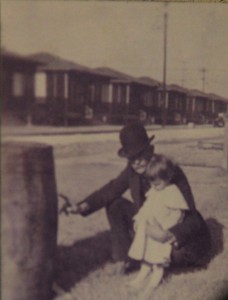
Discovered by Cecil B. DeMille, Keyes was cast in a few lesser known pictures until she landed the role of Suellen, Scarlet O’Hara’s sister, in the movie Gone with the Wind (1939). She then went on to star in other motion pictures, including The Jolson Story (1946), The Prowler (1951), and A Thousand and One Nights (1945), and played Helen Sherman in the classic The Seven Year Itch (1955). She officially retired from acting in 1956 but did take on a few roles in her later years.
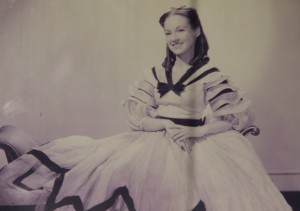 Keyes’ private life appeared similar to that of a Hollywood script. Her first husband committed suicide in 1940. After divorcing her second husband with the help of director Charles Vidor, after two years, she married director John Huston. After the couple adopted a boy that Huston had discovered in Mexico while filming The Treasure of the Sierra Madre. Unfortunately that marriage failed as well, and they were divorced in 1950. After her retirement from film, she married bandleader Artie Shaw in 1957. That marriage would last 28 years.
Keyes’ private life appeared similar to that of a Hollywood script. Her first husband committed suicide in 1940. After divorcing her second husband with the help of director Charles Vidor, after two years, she married director John Huston. After the couple adopted a boy that Huston had discovered in Mexico while filming The Treasure of the Sierra Madre. Unfortunately that marriage failed as well, and they were divorced in 1950. After her retirement from film, she married bandleader Artie Shaw in 1957. That marriage would last 28 years.
In her later years, on occasion, Keyes traveled back to her birth city and donated memorabilia from her career to the Museum of the Gulf Coast. Unfortunately, she was diagnosed with uterine cancer, and at the ripe old age of 91, succumbed to the retched disease at her home in Montecito, California. She died on July 4, 2008. She now rests in her birth city of Port Arthur, but when scanning the old stones from Greenlawn or the Calvary cemeteries, I found no mention of her. This is because, “it was her last wish that, upon her death, her ashes be placed in a lamp, similar to the one she emerged from when she played a genie in the 1945 film A Thousand and One Nights.”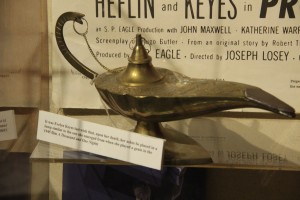
When you visit the Museum of the Gulf Coast, you will find that there is a lot to see. But remember when you are strolling through the Evelyn Keyes exhibit that you are, for all intensive purposes, walking through hallowed ground.
Tales from Hallowed Ground: Tom The Tramp
Still inspired by the Liberty County Historical Commission’s “Whispers of the Past,” I find myself wanting to bring a few stories from my own county’s cemeteries to light. This is why I want to start a new topic about the inhabitants of cemeteries, which will hopefully feature on this blog once a month. There are many stories out there, hidden away in our hallowed grounds, and I for one am interested in bringing these stories, legends, and tales to the fore. I would also love your input, so please leave your suggestions, stories, and comments on the Rediscovering SETX Facebook page or email me at rediscoveringsetx@gmail.com.
Roaming through the hilly terrain of one of Beaumont’s oldest cemeteries, I passed many obelisks, mausoleums, and other monuments dedicated to the “who was who” of Beaumont’s 175-year existence—each edifice undoubtedly clutching a story that’s waiting to be told. However, let us sidestep our SETX citizens at this time in favor of a hero who became a permanent resident of the Magnolia Cemetery too soon.
Because the Great Storm of 1900 took many lives and devastated Galveston’s shore, most forget that the residents of Bolivar Peninsula also shared the same fate, and this is where our story begins.
Alice and Frank Keith were two prominent names in old Beaumont, not least because Frank owned the Keith Lumber Company. On September 8th of 1900, Alice and Frank were in New York while their two daughters, Alice and Olga, stayed with relatives at a hotel in Patton Beach (now named Crystal Beach). As the storm worsened, Mrs. Irwin, the hotel manager, and an employee, Tom, nicknamed “Tom the Tramp,” thought it would be safer for the Keith’s daughters to ride the storm out in another house near the hotel.
Unfortunately the severity of the storm proved too much for the structure, and the house began to break up. Mrs. Irwin picked up Alice, and taking Olga’s hand to hers, headed for another house. As they departed, a large wave knocked Alice out. Mrs. Irwin managed to hold onto the girl, but Olga was separated from her. As if by fate, Tom swiftly retrieved Olga from the water and gave her back to Mrs. Irwin. He then took Alice and began to roll her back and forth over his shoulder, which revived her. As the storm raged on, the four again sought shelter in the house. Luckily, they all survived.
Both Frank and Alice were unaware of their daughters’ struggle for survival, but I’m sure they were devastated when they read a story in a New York newspaper that reported that their daughters had perished. However, as we already know, the newspaper was fortunately wrong, and the Keith’s were able to hold their daughters once again and hear the tale of heroism of the girls’ two saviors. Indeed, the Keith’s were so grateful to the two that they offered them each a house, which Tom accepted.
This would have made for a happy ending to a great story, but sadly in 1909, Tom kicked over an oil lamp while having a seizure and burned to death in his house. Ever grateful for his heroism, Frank and Alice laid him to rest in their family plot at Magnolia Cemetery with the name they knew him by and a tribute befitting of their hero:
Tom
The Tramp
Died December 5, 1909
“He alone is great, who by an act heroic, renders a real service.”
Source: Judy Linsley
A Look Back and a Look Forward
2013 was a grand year for me here at Rediscovering Southeast Texas. I had the opportunity to explore many wonderful places and meet countless interesting people. I believe that with your help, 2014 will be even better. SETX has a rich history, and I would like to share it with as many people as possible. Your input is important, and I welcome your suggestions, insights, and stories.
The Houses:
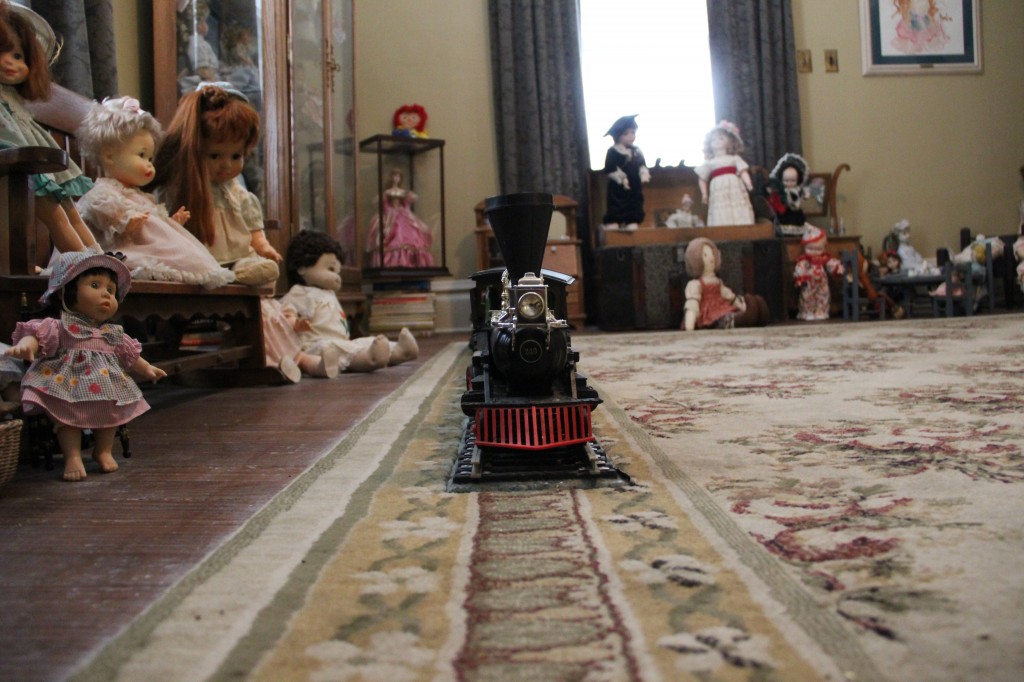 Rose Hill Manor is a Port Arthur treasure that I had never visited—until 2013. To find out that Donia Thibodeaux’s doll collection is on display there brought back scores of memories. I knew Mrs. Thibodeaux back in the 1990s and found her to be the nicest of individuals who was also most informative about the old Port Arthur.
Rose Hill Manor is a Port Arthur treasure that I had never visited—until 2013. To find out that Donia Thibodeaux’s doll collection is on display there brought back scores of memories. I knew Mrs. Thibodeaux back in the 1990s and found her to be the nicest of individuals who was also most informative about the old Port Arthur.
“The reason Griffin Park roads are the way they are is because they were once wagon trails. You can’t turn a wagon on a dime. You have to make a wide swing.” Thanks, Mrs. Thibodeaux, you are missed.
The Women’s Club of Beaumont is a place that I have passed many times, but it wasn’t until 2013 that I finally got to see inside. Thank you, Mrs. Walker- King, for the invite. Over its 100-plus years, the who’s who of Beaumont have been associated with this house in one way or another. I’m glad it’s in good hands.
It goes without saying that the Chambers, French, and McFaddin-Ward houses were a favorite stop as well.
The Museums:
 2013 also brought us a new museum. The Museum of Hardin County, located in Kountze, opened its doors in August, and what a fantastic source of SETX history this is for all of us to cherish. Not only does it show all Hardin County’s history, but it is a valuable repository for neighboring counties as well.
2013 also brought us a new museum. The Museum of Hardin County, located in Kountze, opened its doors in August, and what a fantastic source of SETX history this is for all of us to cherish. Not only does it show all Hardin County’s history, but it is a valuable repository for neighboring counties as well.
Speaking of Hardin County, I was invited to the Terry Bertha Cromwell Museum in Sour Lake in October. This is another destination that everyone who is interested in SETX history should frequent. From the birth of Texaco to the old Hardin County jail, it’s all on display. My favorites are the photographs—I particularly love the old photos of the early Hardin County families.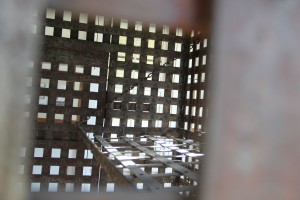
The History:
This year I found out about the origin of the name Beauxart Gardens, located in Mid-Jefferson County, as well as life in Port Arthur during World War II. These insights were shared by two people who experienced life in the 30s and 40s firsthand. I found their stories irresistible and would love to hear more. Do you know someone with a story to tell? My contact info is at the end of this article.
2013 was also the 100th anniversary of the Interurban. The Interurban was an electric train that ran between Port Arthur and Beaumont from December 15, 1913, to August 15, 1932. This is a subject that I would like to investigate further in the future.
The Events:
 Certainly many events took place in SETX last year. One of my favorites was the Galveston Historic Homes Tour. There were nine notable private homes on display for all of us to experience and enjoy, but the 10th, which you might remember as being the cause of the Great Bootie Debacle, was simple, modern, and dangerous. Yep, it’s always those folk who screw up a tour. Just say “no” to tours involving booties. They may just get you into trouble.
Certainly many events took place in SETX last year. One of my favorites was the Galveston Historic Homes Tour. There were nine notable private homes on display for all of us to experience and enjoy, but the 10th, which you might remember as being the cause of the Great Bootie Debacle, was simple, modern, and dangerous. Yep, it’s always those folk who screw up a tour. Just say “no” to tours involving booties. They may just get you into trouble.
 In 2013, Orangefield turned 100, and what a celebration these fine folks put on. The Cormier Museum was also open for people to browse through and enjoy. Another highlight was a visit from the Big Thicket Outlaws. Tejano and clan always put on a good show.
In 2013, Orangefield turned 100, and what a celebration these fine folks put on. The Cormier Museum was also open for people to browse through and enjoy. Another highlight was a visit from the Big Thicket Outlaws. Tejano and clan always put on a good show.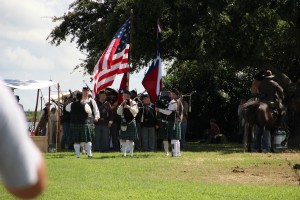
2013 was also a year of remembrance for American history. It marked the sesquicentennial of many of the War against the States battles, and Sabine Pass was no exception. The 50th anniversary of Dick Dowling Days and the 150th anniversary of the Battle of Sabine Pass drew many spectators and reenactors—both foreign and domestic—and was a huge success. I personally met a lot of new and fascinating people. Indeed, I never knew what really went into reenacting, but after talking to a few accomplished living historians, I now realize that it involves a substantial amount of time and effort.
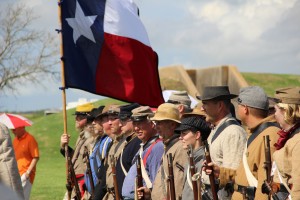 For that reason, I would like to say what a tremendous job the members of the Dick Dowling Camp #1295 and the Kate Dorman OCR Chapter 11 did in making this event possible. Some members certainly went above and beyond the call of duty. Thanks especially to Mr. Michael McGreevy.
For that reason, I would like to say what a tremendous job the members of the Dick Dowling Camp #1295 and the Kate Dorman OCR Chapter 11 did in making this event possible. Some members certainly went above and beyond the call of duty. Thanks especially to Mr. Michael McGreevy.
Jane Long Days in Bolivar brought many things, too. I was particularly glad to see such a fine lady remembered as such. The new memorial, located at the entrance to Fort Travis, is one of a kind, and I was happy to see a few Texan reenactors at this event. Another gift, brought to us by the Galveston Historical Commission, was the opening of Battery 236. This structure, built in the 1940s during WWII, is not the only fortification on the peninsula—two more had previously been built in 1898, and another in 1917.
Shangri La in Orange has always been a favorite of mine. I especially love the Scarecrow Festival (in October) and the Evening Strolls (in December). There is always something to see in this astonishing place, especially if you are into wildlife photography. 
 The Liberty County Historical Commission put on “Whispers from the Past” in October, both as a fundraiser and to promote their rich heritage. I hope this becomes a yearly event because it really inspired me to search my own backyard (so to speak). Whether it’s Magnolia Cemetery (Beaumont), Greenlawn (Port Arthur), or Oak Bluff (Port Neches), there are stories waiting to be told. So stay tuned!
The Liberty County Historical Commission put on “Whispers from the Past” in October, both as a fundraiser and to promote their rich heritage. I hope this becomes a yearly event because it really inspired me to search my own backyard (so to speak). Whether it’s Magnolia Cemetery (Beaumont), Greenlawn (Port Arthur), or Oak Bluff (Port Neches), there are stories waiting to be told. So stay tuned!
One of my highlights of 2013 was undoubtedly the new discoveries in my research into Florence Stratton’s life. After 14 months’ investigation, I can now finally say that her birthdate is March 21, 1881. I discovered two mentions of this in her column, “Susie Spindletop’s Weekly Letter.” Furthermore, a descendent from the Stephens/Stevens family kindly donated 62 letters from Asa Evan Stratton (Florence’s father), Asa’s brother, and Emily (Florence’s older sister), to the Tyrrell Historical Library. Thanks to a letter written by Emily, dated February 1883, along with the 1900 census record, I was finally able to confirm that Florence was born in 1881 and to therefore dismiss Eunice’s (Florence’s niece) account in the Texas Historical and Biographical Record that Florence was born in 1883. Yes, it’s a relatively minuscule detail, but if one is doing historical preservation, I believe this type of information needs to be correct.
2014:
I am looking forward to this New Year and all that it holds. If you have a story, know of a legend, or have any interesting historical treasures to share, I would love to hear from you. I am also looking for historical houses, old cemeteries, and museums that many people may not know about.
Here’s to you, SETX! Thank you for your continued interest and support.
My Contact information: rediscoveringsetx@gmail.com
Whispers from Liberty County
It seems I’ve been spending a lot of time in cemeteries lately. Of course, with Halloween just past, it is the time of year to remember our ancestors, friends, and those whose memories we cherish and who have passed on to lay the groundwork for when we join them. It also helps to pique one’s interest in their lives when the living honor them by holding a tribute of sorts. This is what the Liberty County Historical Commission did last weekend, and boy, was it a special!
Whispers from the Past… Tales and Tours from the Liberty City Cemetery was an event that I found intriguing and enjoyed wholeheartedly. It also got me thinking that each county—or city—could do the same as these fine folks and bring their history alive for all to see. But as always it will come down to volunteers, volunteers, and more volunteers.
I was very impressed with the actors. Not only did they do an impressive job of taking us back in time, but they revealed their passion for their characters by providing us with insights into these people’s lives. It’s hard to choose the best story to share. In all honesty, all the stories were fantastic when told in this way. Here are a few examples:
Ephraim Jesse Crain, portrayed by Cody Abshire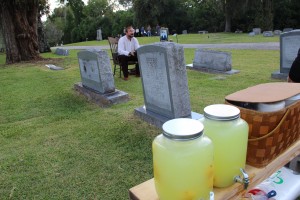
This individual endured a hard life, but when he was handed lemons, Ephraim made lemonade.
Born on a plantation in Louisiana in 1836 (or 1837), Ephraim lost his father at the age of eight but was lucky to have a caring stepfather who made sure he received an education. Ephraim got married at age 22 although his wife sadly passed on three years later.
During the War Between the States, Ephraim fought for the Confederates, even participating in the Battle of Gettysburg, where he saw much death and destruction. Afterwards, he walked back to Louisiana from Virginia, seeing firsthand how the war had ravaged the land and the toll it had taken on its people.
After returning to the plantation, Ephraim tried to get it running again but went bankrupt. Later he travelled to Natchitoches where he met his second wife, Corinne. They set out together for greener pastures in Houston but ended up settling in Liberty after hearing about Houston’s yellow fever epidemic. They are buried side by side in the Liberty City Cemetery.
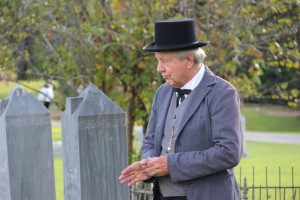 Col. E. B. Pickett, portrayed by Bob Sherer
Col. E. B. Pickett, portrayed by Bob Sherer
Colonel Pickett was born in Wilson County, Tennessee, in 1826. In 1848 he served in the U.S. Army during the Mexican–American War. After the War he married Virginia Bell and immediately relocated to Liberty County, Texas, where he started practicing law.
During the War Between the States, he joined the Confederate Army, but he and his regiment were captured in Arkansas. He spent one-and-a-half to two years in a prisoner-of-war camp but was released during a prisoner exchange. With the death of his wife in 1864, Col. Pickett immersed himself in his work. He became a familiar figure in the political world and served in the Texas Senate from 1870 to 1874.
Colonel E. B. Pickett died in 1882, but his descendants continue to live in Liberty County.
Katherine Nolan, portrayed by Deborah Pickett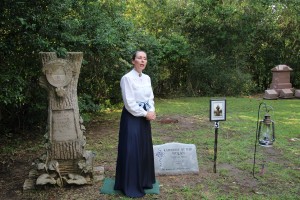
Katherine Butler, who was known as Kate, was born in Dublin, Ireland, in 1827. When she was nine, a wealthy cousin took an interest in her and saw to it that she received an education. She studied many languages, including French, Italian, and German.
Kate met an Irish widower from Texas named William Nolan, and after a six-week courtship, they were married. They sailed to Galveston in 1850 and then moved to Richmond, Texas. Between the harshness of the land, the Indians, and the mosquitoes, her new surroundings didn’t sit well with Kate. But William, his library, and musical instruments helped her persevere.
Despite many hard times, the couple both survived, finally ending up in Liberty, thanks to the Catholic Bishop who offered them an opportunity to open a school there. Kate and William taught at the school for about eight years before moving back to Richmond in 1875. Sadly William died two years later, so Kate went to live with her daughter in Liberty where she taught music and lived out the remainder of her life. Kate died in 1904.
Other stories from the Whispers from the Past event that I want to delve into at a later date are:
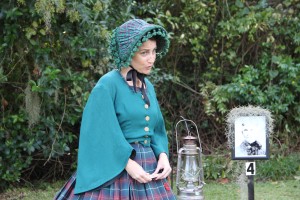 “Little Miss Rose,” the Runaway Scrape child, portrayed by Alana Inman
“Little Miss Rose,” the Runaway Scrape child, portrayed by Alana Inman
Capt. William Duncan and Celima DeBlanc Duncan, portrayed by Don Smart and Darlene Mott
James Madison Hall, portrayed by Kevin Ladd
Thomas Blake Smith, portrayed by Neal Thorton
Col. Franklin Hardin and Cynthia O’Brien Hardin, portrayed by Eric and Glenda Sandifer
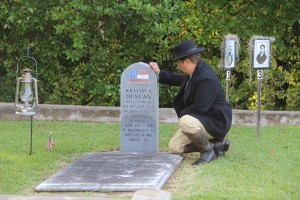 All proceeds from Whispers from the Past… Tales and Tours from the Liberty City Cemetery go to the Liberty County Historical Commission.
All proceeds from Whispers from the Past… Tales and Tours from the Liberty City Cemetery go to the Liberty County Historical Commission.
This was indeed an event that I will attend again next year. Once more, I commend all who participated… You did a magnificent job!
More photos :
http://www.flickr.com/photos/25032584@N05/sets/72157637031488165/

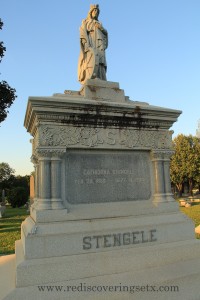
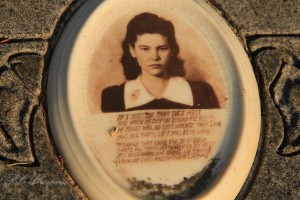

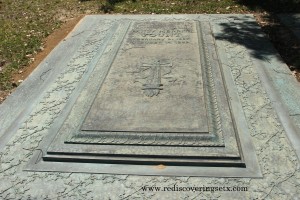
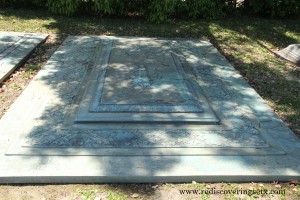


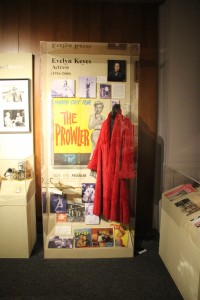
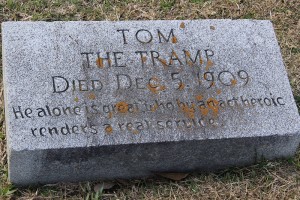
You must be logged in to post a comment.